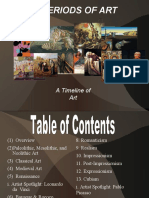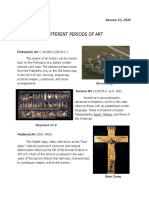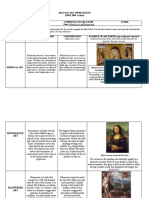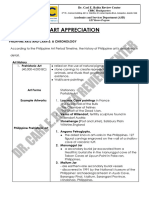0% found this document useful (0 votes)
18 views10 pagesDefine Surrealism Art.: What Is Baroque Art Art?
The document provides definitions and explanations of various art movements and styles, including Surrealism, Baroque, Impressionism, Symbolism, Gothic, Rococo, Pallava, and Tanjore painting, as well as the significance of the Hagia Sophia and the Ajanta and Ellora caves. Each art form is characterized by its unique themes, techniques, and historical contexts, reflecting the cultural and artistic evolution across different periods and regions. Additionally, it touches on the Indian Modern art movement, highlighting its emergence in the late 19th century amidst colonial influences.
Uploaded by
inbaarasu03Copyright
© © All Rights Reserved
We take content rights seriously. If you suspect this is your content, claim it here.
Available Formats
Download as DOCX, PDF, TXT or read online on Scribd
0% found this document useful (0 votes)
18 views10 pagesDefine Surrealism Art.: What Is Baroque Art Art?
The document provides definitions and explanations of various art movements and styles, including Surrealism, Baroque, Impressionism, Symbolism, Gothic, Rococo, Pallava, and Tanjore painting, as well as the significance of the Hagia Sophia and the Ajanta and Ellora caves. Each art form is characterized by its unique themes, techniques, and historical contexts, reflecting the cultural and artistic evolution across different periods and regions. Additionally, it touches on the Indian Modern art movement, highlighting its emergence in the late 19th century amidst colonial influences.
Uploaded by
inbaarasu03Copyright
© © All Rights Reserved
We take content rights seriously. If you suspect this is your content, claim it here.
Available Formats
Download as DOCX, PDF, TXT or read online on Scribd
/ 10















































































































